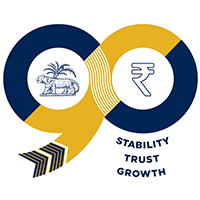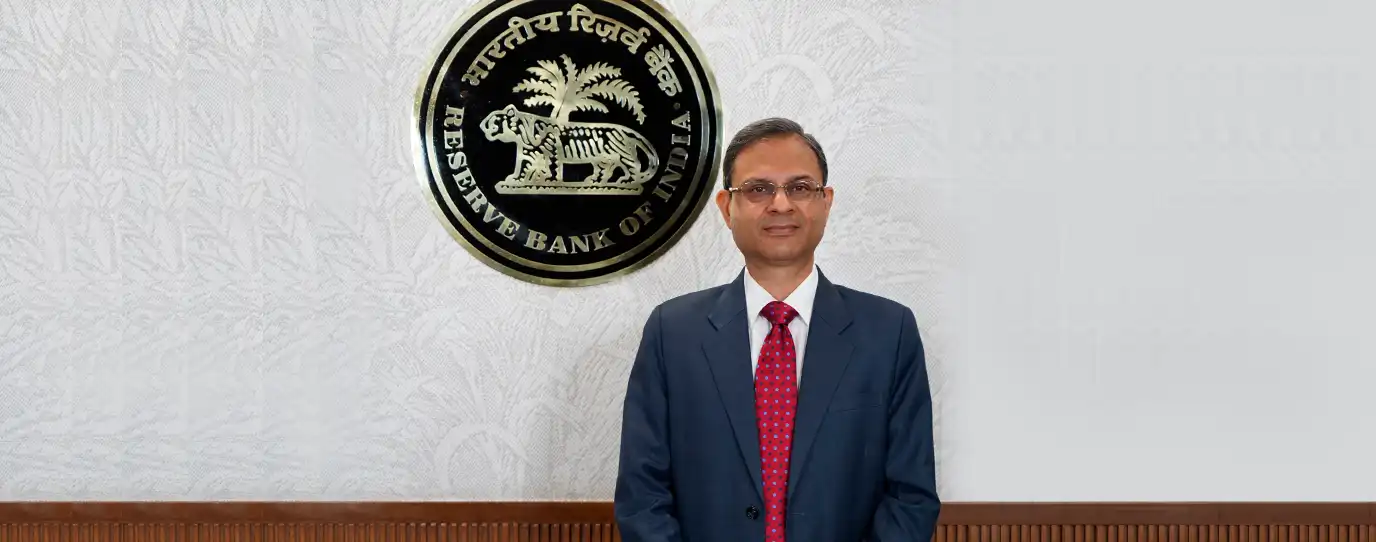Speeches - ಆರ್ಬಿಐ - Reserve Bank of India
Speeches
Good Morning to you all! I am delighted to be here again at the prestigious Annual Central Banking Seminar, a flagship event of the Federal Reserve Bank of New York for which it has earned global renown. It is truly an honour to interact with central bankers from around the world, our community of tomorrow. You embody the theme of India’s G20 Presidency – Vasudhaivya Kutumbakam: the world is one family.
The Climate is Striking Back
In my past interactions in this Seminar, I have dwelled on macroeconomic stability; price stability; exchange rate stability; financial stability – all essentially issues centered around the core competence of conservative central bankers from which we are reluctant to stray. After all, central banks stand for stability.
Good Morning to you all! I am delighted to be here again at the prestigious Annual Central Banking Seminar, a flagship event of the Federal Reserve Bank of New York for which it has earned global renown. It is truly an honour to interact with central bankers from around the world, our community of tomorrow. You embody the theme of India’s G20 Presidency – Vasudhaivya Kutumbakam: the world is one family.
The Climate is Striking Back
In my past interactions in this Seminar, I have dwelled on macroeconomic stability; price stability; exchange rate stability; financial stability – all essentially issues centered around the core competence of conservative central bankers from which we are reluctant to stray. After all, central banks stand for stability.
Good afternoon and Namaskar. Thank you Alfred for those insightful opening remarks. I must mention that Alfred led the IMF’s Article IV India mission for the 2021 consultations. The sheer weight of that experience and deep understanding of Indian conditions is reflected in his views. I would also like to commend Alfred and his co-editors for a comprehensive evaluation of India’s financial system and very valuable recommendations on the way forward in a recent book evocatively titled “India’s Financial System: Building the Foundation for Strong and Sustainable Growth”.
I am glad to see Mr Thomas Helbling from the Asia and Pacific Department of the IMF in this session, and I look forward to hearing from him.
I thank our host and SEACEN EXCO Chair, the National Bank of Cambodia, the SEACEN Centre and Dr. Mangal Goswami, Executive Director, and the BIS for inviting me to speak in this distinguished forum. In particular, I am grateful to Deputy Governor Sum Sannisith for so graciously writing to me to participate in this 16th SEACEN-BIS High Level Seminar.
The Backdrop
It is widely believed that during the next two decades – if not for longer – the centre of gravity of the global economy will shift eastwards to Asia. The IMF’s Regional Economic Outlook for Asia and the Pacific indicates that this region will contribute about two-thirds of global growth in 2023 itself. India will account for a sixth of world output growth in 2023 and 2024. In terms of market exchange rates, India is the fifth largest economy of the world and the third largest economy on the basis of purchasing power parity. Our assessment is that by 2027, India will be a US$ 5 trillion economy and the third largest in the world even by market exchange rates. A key driver in this transformation is likely to be the window of a demographic dividend that opened up in 2018 and will probably last till the 2040s, going by fertility and mortality rates. Already, we are the most populous country in the world at 1.4 billion and the youngest at an average age of 28 years. The other major catalyst of India’s progress will be the pace and quality of financial sector development, which is the theme of my address today. It is anchored by a few slides.
Good afternoon and Namaskar. Thank you Alfred for those insightful opening remarks. I must mention that Alfred led the IMF’s Article IV India mission for the 2021 consultations. The sheer weight of that experience and deep understanding of Indian conditions is reflected in his views. I would also like to commend Alfred and his co-editors for a comprehensive evaluation of India’s financial system and very valuable recommendations on the way forward in a recent book evocatively titled “India’s Financial System: Building the Foundation for Strong and Sustainable Growth”.
I am glad to see Mr Thomas Helbling from the Asia and Pacific Department of the IMF in this session, and I look forward to hearing from him.
I thank our host and SEACEN EXCO Chair, the National Bank of Cambodia, the SEACEN Centre and Dr. Mangal Goswami, Executive Director, and the BIS for inviting me to speak in this distinguished forum. In particular, I am grateful to Deputy Governor Sum Sannisith for so graciously writing to me to participate in this 16th SEACEN-BIS High Level Seminar.
The Backdrop
It is widely believed that during the next two decades – if not for longer – the centre of gravity of the global economy will shift eastwards to Asia. The IMF’s Regional Economic Outlook for Asia and the Pacific indicates that this region will contribute about two-thirds of global growth in 2023 itself. India will account for a sixth of world output growth in 2023 and 2024. In terms of market exchange rates, India is the fifth largest economy of the world and the third largest economy on the basis of purchasing power parity. Our assessment is that by 2027, India will be a US$ 5 trillion economy and the third largest in the world even by market exchange rates. A key driver in this transformation is likely to be the window of a demographic dividend that opened up in 2018 and will probably last till the 2040s, going by fertility and mortality rates. Already, we are the most populous country in the world at 1.4 billion and the youngest at an average age of 28 years. The other major catalyst of India’s progress will be the pace and quality of financial sector development, which is the theme of my address today. It is anchored by a few slides.
I. Introduction Good evening! I welcome you all to the sixth Asia KLEMS Conference, to India and to the Reserve Bank of India, henceforth RBI. We are honoured to host this conference in physical mode after the arduous isolation imposed by the pandemic. The hill town of Lonavala, an ancient resting place for travellers and traders, is nestled in India’s soon-to-be monsoon-drenched western ghats – a chain of mountains running 30 to 50 km inland parallel to India’s west
I. Introduction Good evening! I welcome you all to the sixth Asia KLEMS Conference, to India and to the Reserve Bank of India, henceforth RBI. We are honoured to host this conference in physical mode after the arduous isolation imposed by the pandemic. The hill town of Lonavala, an ancient resting place for travellers and traders, is nestled in India’s soon-to-be monsoon-drenched western ghats – a chain of mountains running 30 to 50 km inland parallel to India’s west
I thank you all for your very valuable participation in this seminar, the third in the series that we began in May 2016. In this context, I want to thank our team in the Financial Markets Regulation Department for making this Seminar happen with physical interactions after a long gap. Given my abiding interest in financial markets, I am particularly grateful to our team for ensuring that I don’t miss this opportunity to be with treasury heads and financial market expe
I thank you all for your very valuable participation in this seminar, the third in the series that we began in May 2016. In this context, I want to thank our team in the Financial Markets Regulation Department for making this Seminar happen with physical interactions after a long gap. Given my abiding interest in financial markets, I am particularly grateful to our team for ensuring that I don’t miss this opportunity to be with treasury heads and financial market expe
Good afternoon and a warm welcome to South Asian Association for Regional Cooperation (SAARC) central bank colleagues participating in this first physical seminar under the aegis of SAARCFINANCE after the onset of the pandemic. Greetings to Ms. Dechen Pelzom, Executive Director, Royal Monetary Authority of Bhutan. We are delighted to have with us colleagues from the Ministry of Finance, and virtual participants from our central banks, the Bank for International Settle
Good afternoon and a warm welcome to South Asian Association for Regional Cooperation (SAARC) central bank colleagues participating in this first physical seminar under the aegis of SAARCFINANCE after the onset of the pandemic. Greetings to Ms. Dechen Pelzom, Executive Director, Royal Monetary Authority of Bhutan. We are delighted to have with us colleagues from the Ministry of Finance, and virtual participants from our central banks, the Bank for International Settle
Dr. Hrudananda Panda, Regional Director, Reserve Bank of India (RBI), Bhubaneswar, distinguished guests of the RBI from the Government of Odisha, academia, banks, financial institutions, industry associations, the media, scholars and students, my colleagues from the RBI, Ladies and Gentlemen, I am deeply honoured to be invited to deliver this address as part of the celebration of the 75th year of our Independence. I thank Dr. Panda for inviting me and more than that,
Dr. Hrudananda Panda, Regional Director, Reserve Bank of India (RBI), Bhubaneswar, distinguished guests of the RBI from the Government of Odisha, academia, banks, financial institutions, industry associations, the media, scholars and students, my colleagues from the RBI, Ladies and Gentlemen, I am deeply honoured to be invited to deliver this address as part of the celebration of the 75th year of our Independence. I thank Dr. Panda for inviting me and more than that,
ಪೇಜ್ ಕೊನೆಯದಾಗಿ ಅಪ್ಡೇಟ್ ಆದ ದಿನಾಂಕ: ಮೇ 05, 2025



















